Proponents claim that the flattened plants in some crop circles show interlacings, and that thus, the crop circles showing such feature are made by extraterrestrial beings, or so-called "paranormal forces" or mysterious beams shot from military satellites.
I found this argumentation here and there is proponents books or more or less convinced websites, formulated variously, an example being this report by an amateur who heard it from a conference by English cerealogist William Betts:
"On these same photographs, we could also clearly see some details which alone exclude, according to him, the creation with "planks and ropes": on small surfaces, the thatches were lying in several different directions, sometimes in four directions (perhaps according to cardinal directions, but that was not specified), at right angles from each other. The passage of a board would undoubtedly not have done that, as William stressed. In the same way, in a circle, he showed that corn thatches were lying in one direction, but the perimeter of this one was flattened in the opposed direction, but on a very reduced width of only few thatches."
This is again only a pseudo-strangeness.
The crop circles experts who say that do not understand how the very human artists make the crop circles.
It is true, absolutely, "the passage of a stomping board would undoubtedly not have done that."
Warning: if you are "totally convinced", you perhaps built a mental image of these "anomalies" in which your imagination makes you mentally visualize very complex interlacings, refined interlacings as complex as your grandmother's knitting. No, it is not so at all, do not get carried away by your imagination. The so-called interlacing is only about packs of stems flattened in one direction, with other packs lying in another direction, nothing more fantastic:
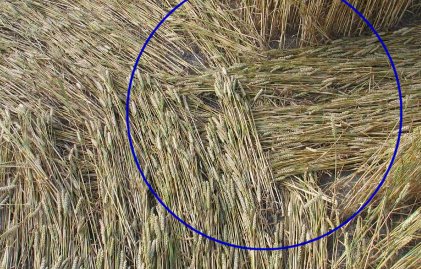
|
So, this is true, absolutely, "the passage of a stomping board would undoubtedly not have done that."
Still, it would be nice id some day the cerealogists would come to understand that before using the stomping boards, the artists use their feet, if only to walk to parts of field to trace the crop circle to be made by stomping!
These "small surfaces" lying in a direction different from the surfaces flattened by the stomping boards, are often found "hidden" underneath the more stems flattened by using the stomping boards. These are very simply the traces of the passages by foot of the artists who make the crop circles. But the majority of the cerealogists do not realize it, and, how ironic, by pure ignorance, they believe that these obvious evidence of the passage of the men in the formation are a proof of its non-human origin.
That's the case with the argument "he showed that corn thatches were lying in one direction, but that the perimeter of this crop circle was flattened in the opposed direction, but on a very reduced width of some thatches only."
Every sensible ufologists and people who know how the crop circles are made know about that, and know why it is like that.
But the "crop circles experts" who put forward their so-called expertise do not know that. After almost 30 years of crop circles, and although they visited sometimes dozens of crop circles in person, they still haven't got it.
Quite simply, when you make a crop circle, which is often (*) based on a circular or round part, you start by tracing the border of the circle, with your feet!
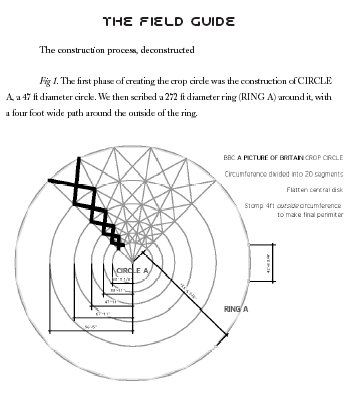
|
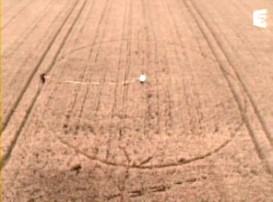
|
On circlemaker stands in the center of the circle to trace, holding a rope (if the artist were alone, he would use a stake.) The other circlemaker holds the other end of the rope, and walks the circle flattening its circumference with his feet. This is simply because doing it with the stomping board is not very practical, as you need both hands to use the stomping board (*): |
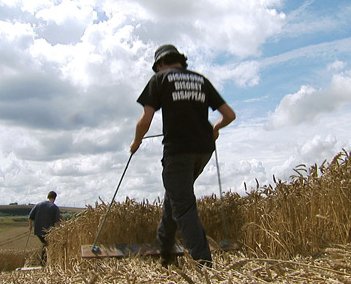
|
The circumference being traced by foot, the interior of the circle can be flattened at "full speed" with the infamous stomping board. Obviously, there is no particular reason to turn around the center only in one direction. Tha artist can have traced the circumference clockwise and then flatten the the interior in the counter-clockwise direction. This is in no way evidence of paranormal or extraterrestrial intervention.
This is the explanation of this pseudo "anomaly" formulated by William Betts as: "corn thatches were lying in one direction, but the perimeter of this crop circle was flattened in the opposed direction, but on a very reduced width of a few thatches."
These "interlacings" and differently flattened contours are absolutely not evidence that there are crop circles made by the aliens or mysterious military/paranormal/alien/interdimensional beams or mischievious waves. Quite to the contrary, they are the signs of the passage of the artists and the sign of their techniques.
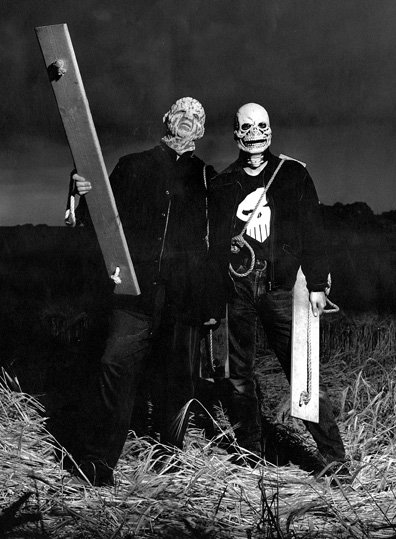
|
Do you recognize them?
To learn more on the topic, one of the books that the "crop circle experts" never tell you about: